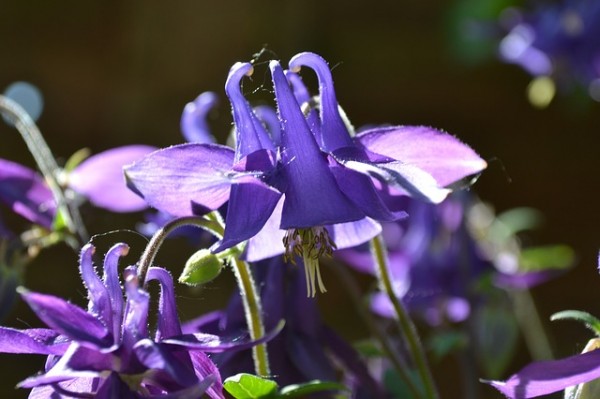
L’columbine, commonly called colombina, is a rustic plant grown for ornamental purposes in pots and in the garden.

General characteristics Aquilegia or Colombina
L’columbine is a perennial plant of the Ranuncolaceae family with a very rustic bushy habit that grows spontaneously in Italy especially in mountainous areas, up to 2,000 meters in height.
On average 40 cm tall, it has glaucous leaves similar to those of clover or maidenhair, with three lobes, more or less incised, but thicker and stronger page or lamina.
The leaf color it is gray-green and in autumn, in some species, it turns towards an intense burgundy hue.
Read also: Corydalis – Colombina cava
From the center of the bushes of leaves, stems 80 – 90 cm long, carry clusters of flowers with a funnel-shaped calyx ending in a kind of beak.
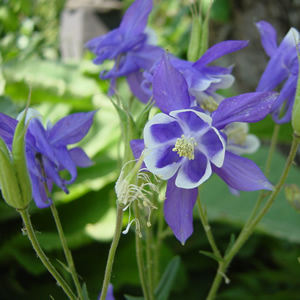
The color of the flowers it is very variegated ranging from white to purple, from blue to pink.

THE fruits they are woody capsules containing numerous seeds which, by self-sowing, generate new plants in summer.
THE seeds they are greenish-black in color and all have a good germination capacity so as to produce new seedlings when they fall to the ground.
Flowering
Columbine blooms profusely from April to June.
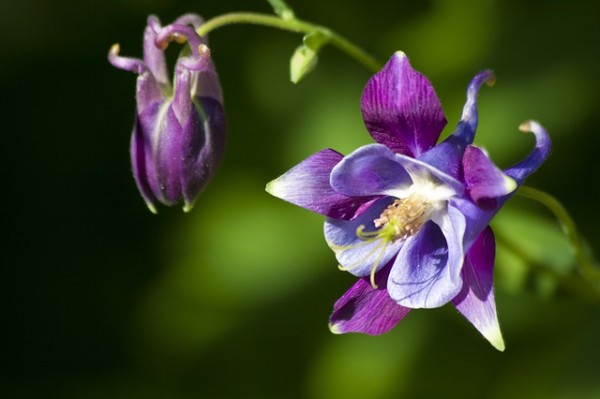
Cultivation of colombina or columbine
Exposure
To flourish profusely, columbines require sunny or semi-shaded positions and do not fear the cold.
Ground
It adapts to common garden soil, even calcareous as long as it is loose and above all well drained.
Watering
Even if the columbines are not particularly demanding of water, they should be watered regularly during the flowering period and in periods of prolonged drought. During the autumn and winter seasons, irrigations must be thinned out or suspended altogether.
It may interest you: Halloween decorations: here’s how to make your garden scary
Fertilization
Every 20 days, in the period from April to July, fertilize with fertilizer for flowering plants, dissolved in the irrigation water or every 2 months administer on the surface of the soil a slow release granular fertilizer balanced in macroelements and with a good percentage of microelements useful for development and growth. The first fertilizations are carried out from March and suspended in summer during the hottest months of July and August. To favor a luxuriant revegetation in the following year, in September it is advisable to provide a little liquid fertilizer for green plants, below the minimum doses indicated on the packages.
Do you have problems with plants? Join the group
Aquilegia: cultivation in pots
The plants of Aquilegia, especially the dwarf varieties, can also be grown in pots of adequate size for their growth and using a substrate a mixture composed in equal parts of common garden soil, neutral peat, and a little pumice, lapillus or expanded clay. (to promote drainage). The plants should be watered frequently during the vegetative season and occasionally (no more than twice a month during the winter rest). The fertilizations are to be done every 15-20 days.
Repotting
Repotting should be done once a year in early spring gradually using a larger container than the previous one, up to a maximum diameter of 20-25 cm per specimen, in relation to the size of the plant. The soil must be new and fresh enriched with a little slow release granular trivalent fertilizer (NPK). If desired, from the appearance of the flower buds and then every 10 days until the end of flowering, you can administer a normal liquid fertilizer for flowering plants.
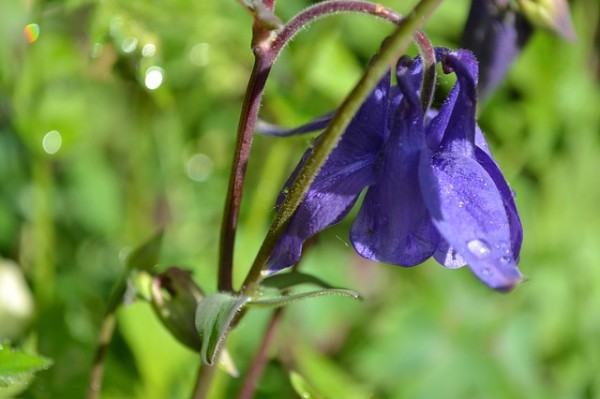
Multiplication of columbine
The columbine reproduces by fresh seeds in summer or by division of the tufts in spring or at the end of flowering.
Sowing
Columbine sowing is carried out in seedbeds or even directly in the ground if the climate is not particularly harsh.
However, the seeds of columbine need a period of vernalization that is, they must be kept for some time in an environment where the temperature is below 0 ° C.
Generally the seeds are distributed in a cold seedbed containing specific soil kept slightly humid until the sprouts appear.
When the seedlings born from seed (after 6 or 12 weeks) have emitted at least three leaves, they can be transplanted into single pots until autumn and then planted in the ground if you want to beautify the garden or grown in pots on the balcony in the shade.
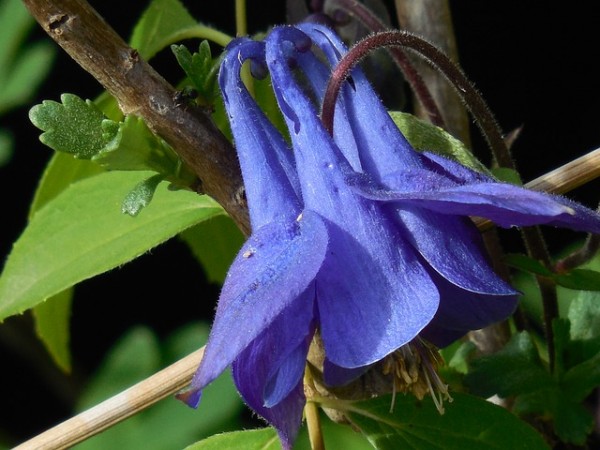
Implantation of columbine and pairings
Columbine seedlings should be planted in spring.
Before planting, the flower bed is digged and the soil is enriched with the addition of mature manure. The holes intended to accommodate the seedlings must be wide and deep just a little more than the size of the bread of earth that surrounds the roots.
To facilitate the drainage of rainwater or irrigation, it is advisable to put coarse sand or other drained material at the bottom of the hole.
After the planting, the gaps are filled with other soil, compacted with a light pressure of the hands and then watered abundantly with possibly non-calcareous water.
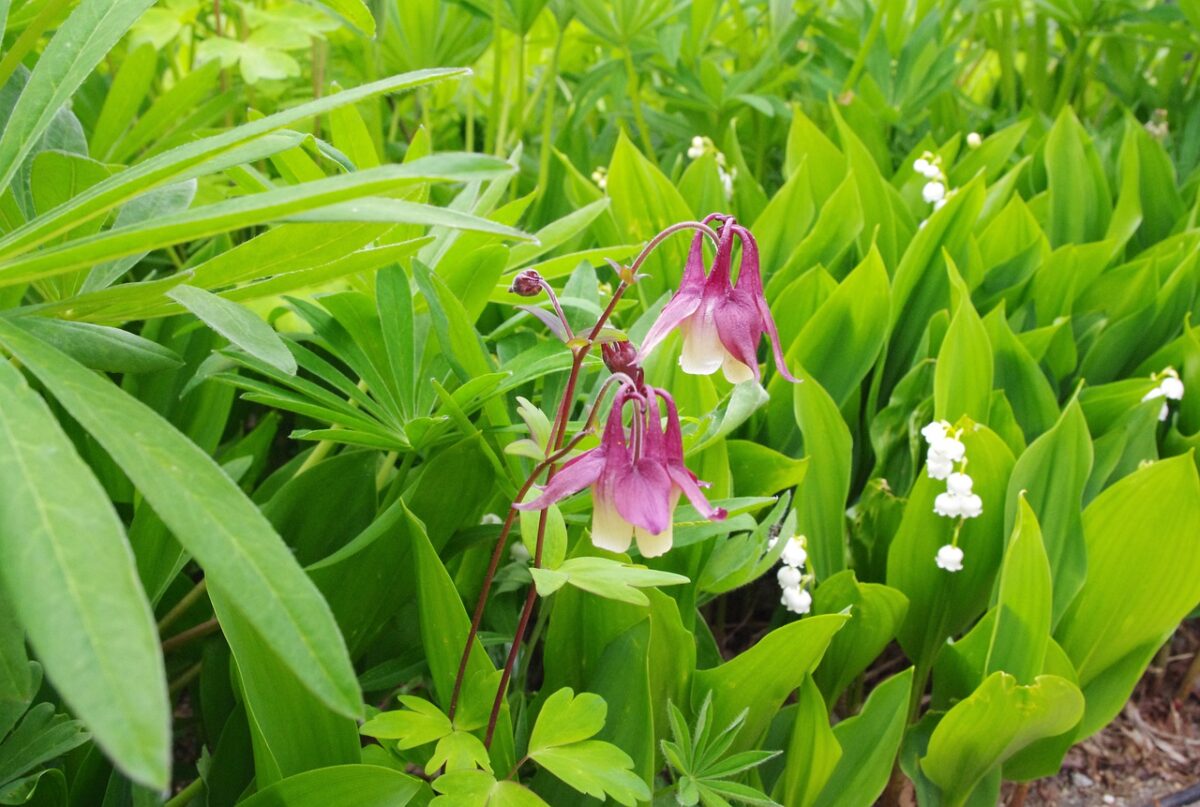
Pairings
Aquilegia plants combine perfectly with Campanula, Digitalis Anemone and Trollius or with green plants such as Hosta, Lily of the Valley.
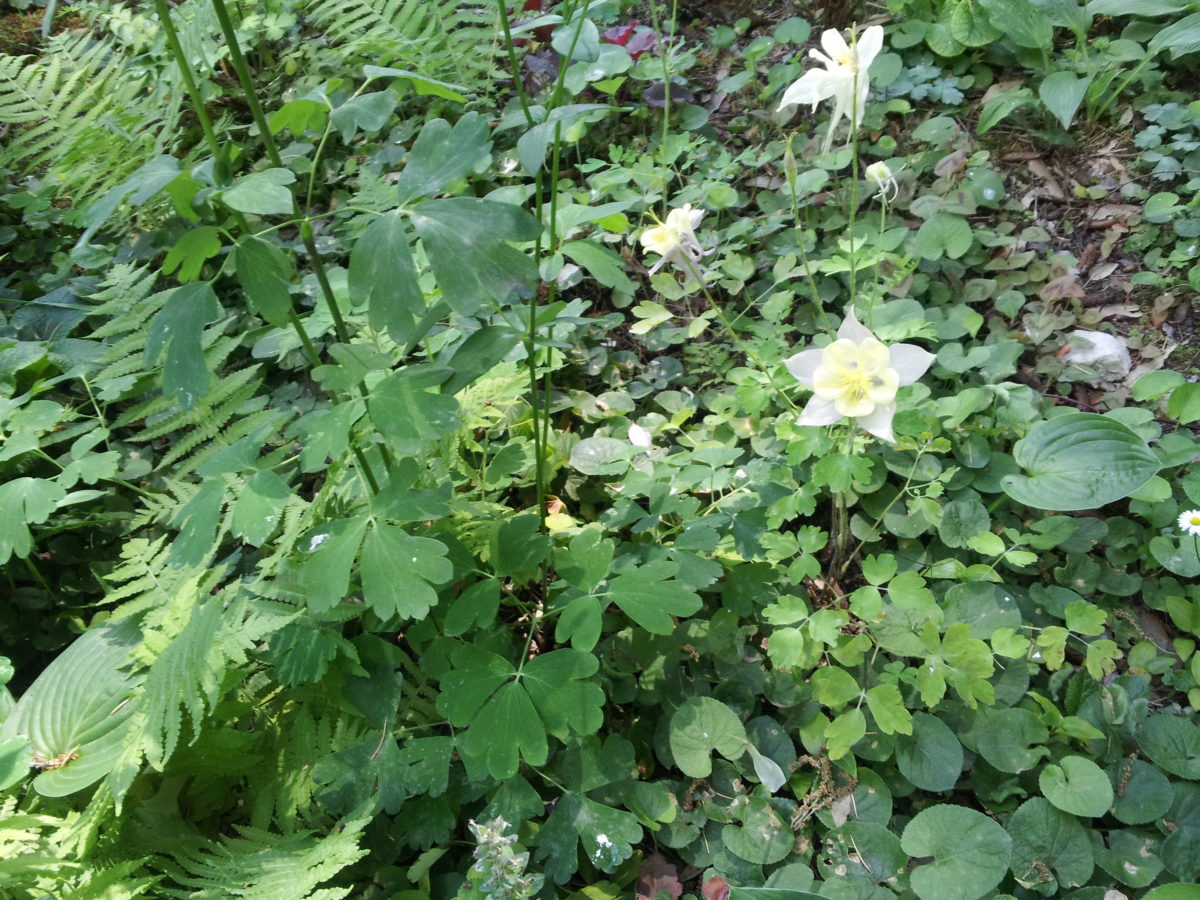
Columbine pruning
The columbine does not require real pruning but to stimulate and prolong flowering, the withered stems are generally cut off at the height of the leaves in the case of dwarf varieties, otherwise at ground level for the other species.
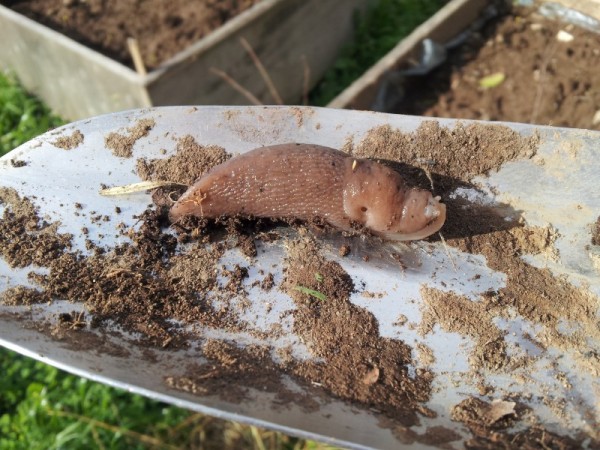
Diseases and parasites of Aquilegia
The columbine fears the attack of snails, snails or slugs that ruin leaves and flowers and the red spider, a small mite that weaves thin cobwebs between the stems.
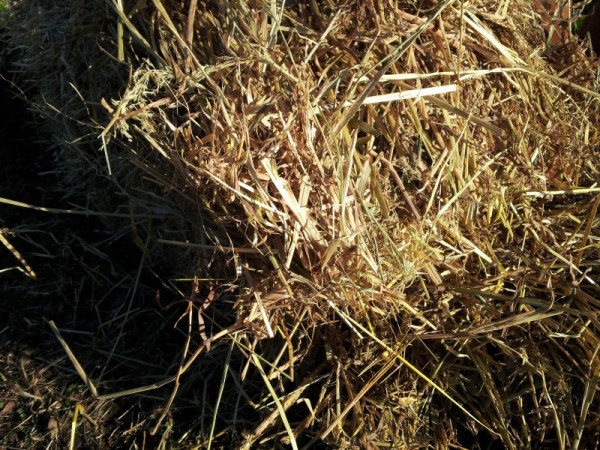
Cures and treatments
Plants grown in pots during the winter should be protected at the base with a light mulch of straw. To keep snails away, just spread some wood ash on the ground, a few centimeters away from the collar of the plants. To prevent the attacks of the red spider, specific anti-acaricides can be used.
Aquilegia in the language of flowers
In the jargon of flowers, columbine takes on the meaning of perfect love.
Is columbine poisonous?
It’s a highly toxic plant due to the presence of active glycosides which, if swallowed, can cause cardio-respiratory difficulties and damage the heart.
Medical properties
In medicine it is used for its antiseptic, diuretic and calming properties, but for its toxicity it is reserved exclusively for use by doctors.
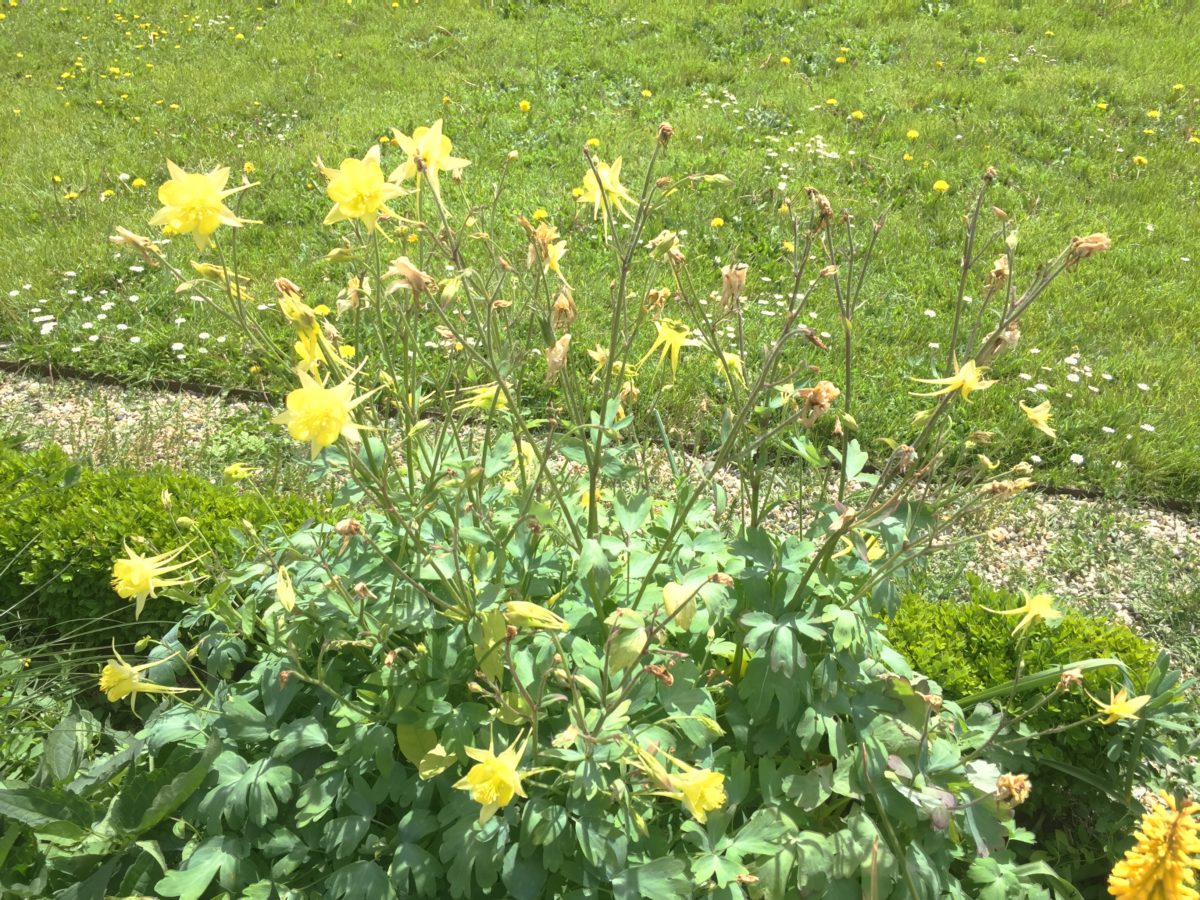
Variety of columbine
The family of the genus Aquilegia (Ranuncolaceae) includes a wide range, about 100, of different species that in Italy grow wild or are cultivated for ornamental purposes in gardens and public parks. Among the species with great development and those of smaller size we remember the most widespread and easy to cultivate.
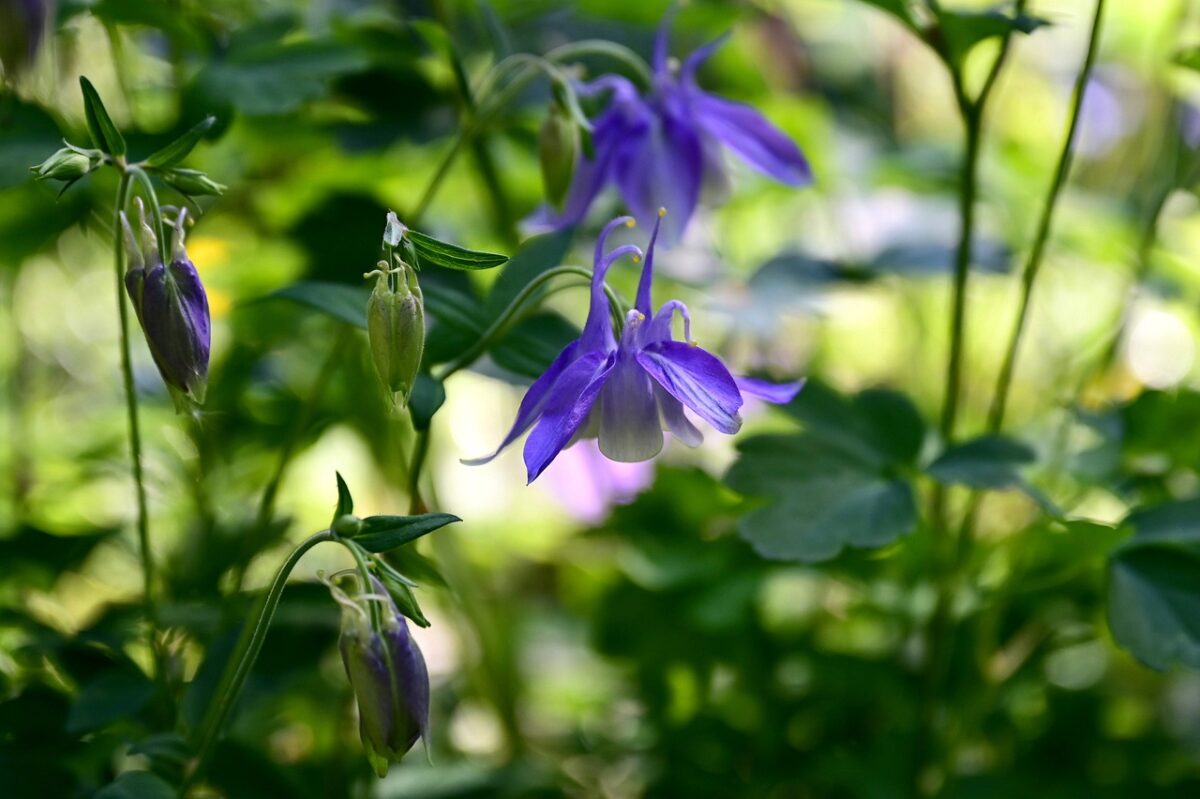
Aquilegia vulgaris
The most widespread species in all of Europe. It is a perennial herbaceous plant more than 1 meter tall with erect and branched glabrous or hairy stems covered with pedunculated basal leaves divided into three fan-shaped elements with rounded lobes and smaller cauline leaves composed of three lanceolate elements. In summer between June-August it produces hanging flowers of a blue-violet color with very evident spurs twisted into a hook. From the center of the 5-petalled corolla, a tuft of yellow anthers protrudes supported by elongated filaments.
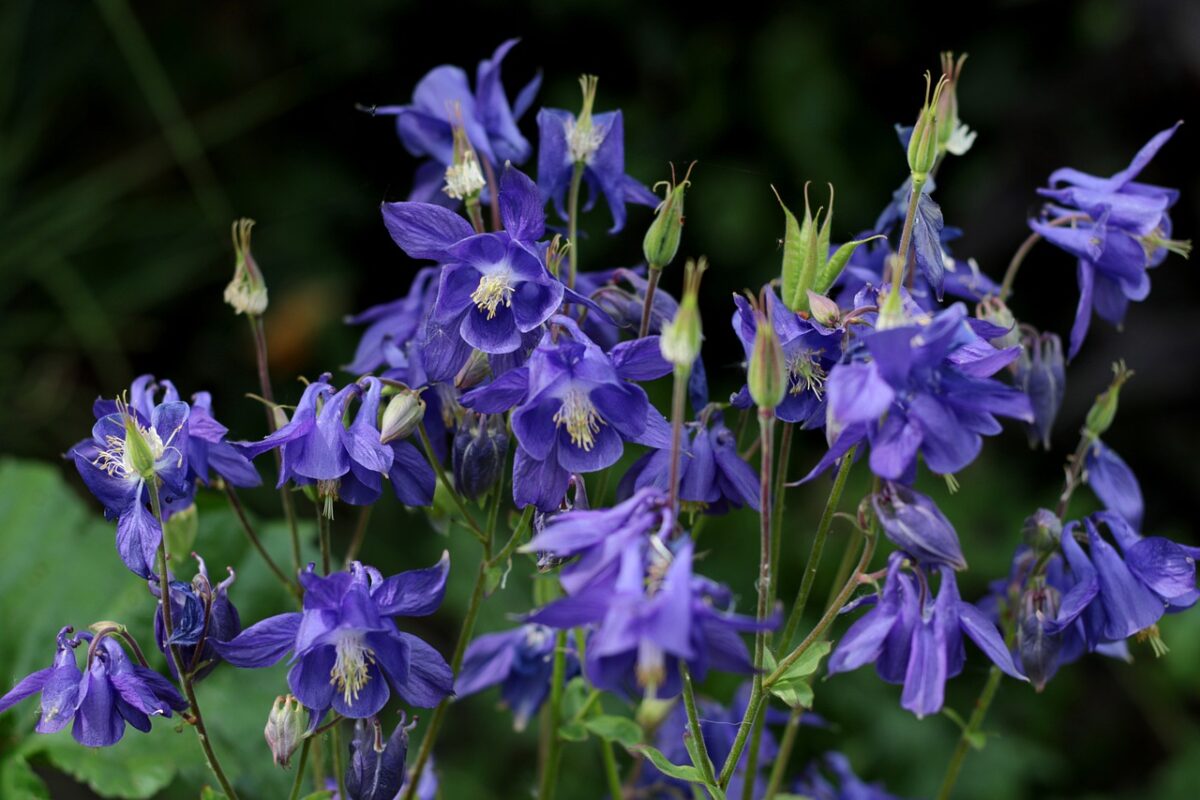
Aquilegia pyrenaica
A species with shorter stems suitable for growing in the rock garden. In summer it produces deep blue flowers with straight spurs and stamens shorter than the petals. It is a rustic plant that grows in nature on stony or gravelly soils up to 2600 meters above sea level.
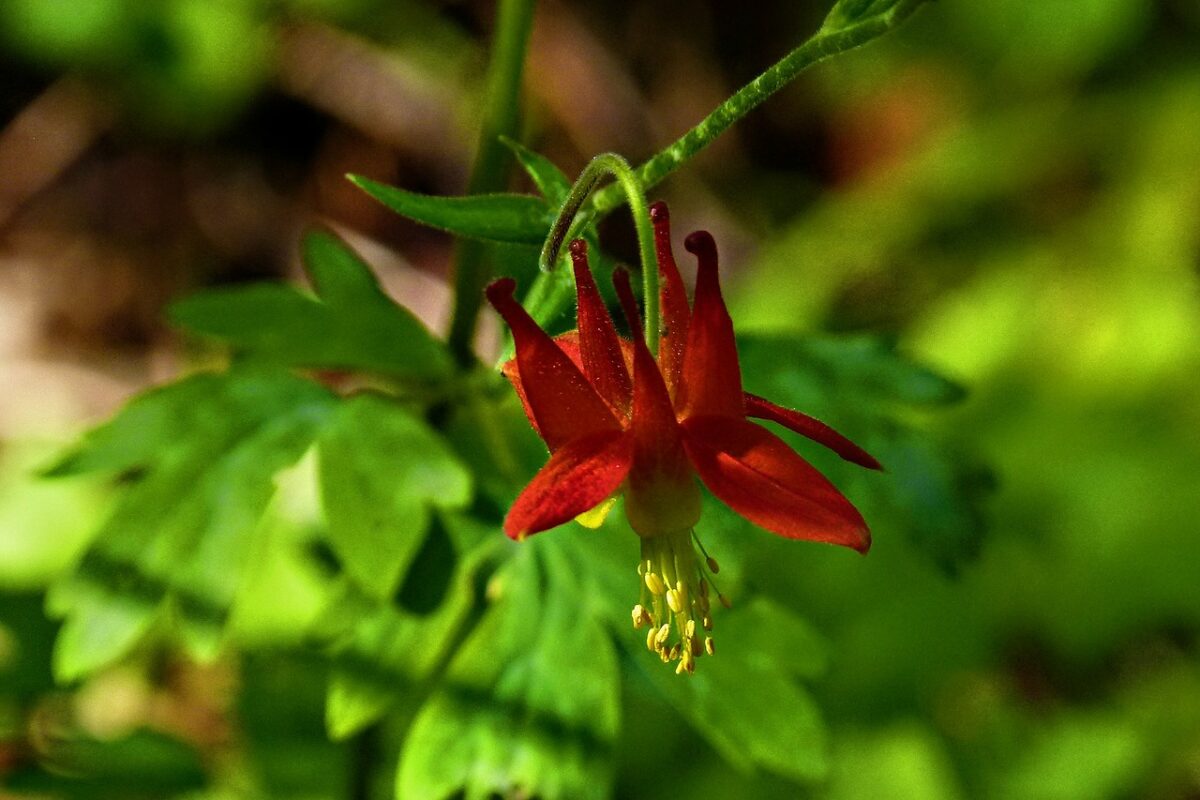
Aquilegia canadensis
A perennial herbaceous plant native to North America. It prefers light, sandy, clayey soils and in May-June it produces red-yellow flowers carried in groups of 2-3 by 60 cm tall stems.
Aquilegia skínneri
Native to North America and Mexico, this approximately 80 cm tall species is resistant to cold. It blooms in summer and its large two-tone yellow-orange flowers with reddish splashes are very decorative.
Columbine flabellata
A fan-shaped species native to Japan also suitable for growing near artificial tanks or ponds. It is a cold-resistant plant from 30 to 60 cm high which at the end of May produces small lilac-blue bicolor flowers with a white border with strongly curved spurs.
Aquilegia longissima
It is a perennial plant suitable for growing in sunny or partial shade areas in a fresh and light soil. The leaves are finely divided and in late spring it produces showy dark yellow flowers.
Aquilegia caerulea
A perennial herb suitable for growing as a single plant or in associated borders with other plants that bloom at different times. Even if the flowering is short-lived, its light flowers with long spurs colored in white, blue, yellow, red, pink, lilac, purple and ivory are truly spectacular.
Aquilegia bertolonii
A dwarf species that grows wild in the southern Alps. In late spring. between April-May, it produces large blue flowers supported by about 15 cm tall stems. It is a plant suitable for growing in pots and in the rock garden.
Columbine alpina
A perennial species that grows spontaneously from the Alps to Western Europe on rocky soils and in meadows. It is a 30-40 cm tall herbaceous plant that blooms in mid-summer and unlike other species it prefers …



Add comment